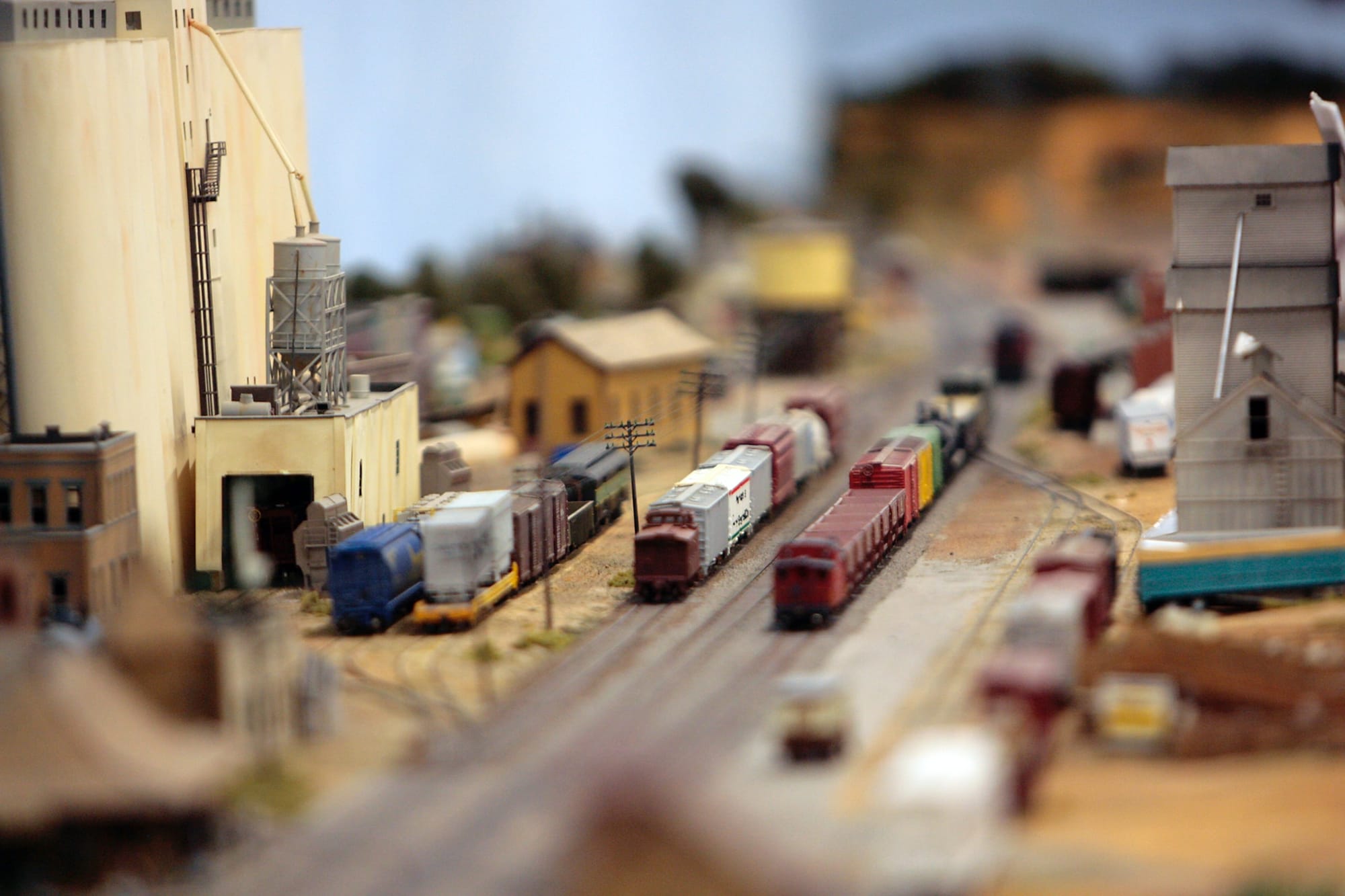What is Z Gauge? A Guide to Z Scale Model Trains
A guide to Z scale model trains and how they compare to HO or OO gauge. Find out if the best Z gauge trains are suited to small spaces or are a cost effective option for a DCC model railway layout.

If you're in the process of researching and planning your model railway build, you may have come across Z gauge model trains. But what exactly is Z gauge and is the Z scale worth investing in and using for your next model train layout? How do they compare to the popular model railway scales such as HO or OO gauge? Are Z scale trains reliable and do they have any specific requirements?
In this guide we'll answer these questions and take a look at Z gauge in detail by weighing up the pros and cons of this model train scale.
What size are Z scale model trains?
Z gauge model train layouts are becoming increasingly popular due to their small size - so they'll certainly appeal to those people with limited space - but just how small are they?
Z scale has a track gauge of 6.5mm or 2.56'' and a scale of 1:220, which equates to 1.385mm to 1 foot.
But how does this relate to real world size of the models? Well, the answer is that they're tiny. (For reference, they're currently the second smallest model railway gauge in mass production).
As a general rule, Z gauge or Z scale trains are about 1 inch in length. So certainly very small - but despite this they're very useable and many interesting and innovative model railways can be produced using a Z gauge layout.
How much do Z Gauge trains cost?
As we explained in our N gauge vs OO gauge guide, N gauge model railway layouts often work out more expensive than OO gauge, despite being a smaller scale. The same is also true for Z gauge model trains, with locomotives and rolling stock often being more expensive than other gauges.
Are Z Gauge trains reliable?
Many people assume that Z gauge trains are less reliable than other model railway gauges. However, this is not the case. If you use high quality equipment, from recognised brands like Märklin or Rokuhan, such as the Märklin starter set, you'll likely have no major issues.
Z gauge model trains are generally just as reliable as other model railway gauges, such as OO gauge or HO gauge. Most reliability problems can usually be attributed to the quality of the track rather than locomotive motor failures.
This is even more the case with Z gauge trains. With the tiny size of the wheels, even the smallest piece of dust or debris has the potential to cause reliability issues. Therefore, it's incredibly important with Z scale to ensure that the track is laid completely flat and is regularly cleaned and maintained. This will ensure that your Z scale model railway will run without problems for many years.
What voltage does Z gauge use?
Most Z gauge trains from manufacturers such as Märklin and Micro-Trains use a maximum of 9 or 10V DC.
If a higher voltage level or an AC power supply is used this will likely cause motor burn out in the model locomotives. For this reason it's recommended you keep to manufacturer supplied controllers when operating Z gauge model train layouts. This will help to ensure that you have many years trouble-free operation of your railway.
Does DCC work with Z Gauge?
Yes, but there are some caveats. The main one is that DCC is only really possible on Z scale when used in modern-era locomotives. So, diesel or electric locomotives rather than steam engines. This is due to the greater level of space in the body shell on these models which can accommodate the required electric circuit boards needed for DCC to operate correctly.
For more information on DCC, be sure to check out our complete guide to DC and DCC model trains where we explain the benefits of DCC model trains in more detail.
How to get started with Z gauge trains
The most cost effective way to get started with Z gauge model trains is with the Märklin starter track set. This set provides all the track and electrical components you need to get started, including ten straight track pieces, electric turnouts, an electric control box, distribution strip, wire and plugs. (You'll need to purchase locomotives & rolling stock separately). The advantage of this track set is that it's easy to expand when you need to - and you can do so in stages when cost and time allow. Additional track, turnouts, more locomotives or rolling stock can be added when desired.
As previously mentioned, Z gauge or Z scale trains are an excellent choice if you live in an apartment with limited space or simply have a small area in which to build your model railway. The small 'real world' size of Z gauge model trains make them ideally suited to situations such as these, as you can simply fit more railway in the space you have available.
However, if space isn't an issue we'd still recommend choosing HO or OO gauge model trains over Z scale. The variety of locomotives, rolling stock and track - and the increased availability of these products on both the new and second hand markets, make these gauges the best choice for most people. See our guide to the best train sets for beginners tips and expert recommendations to get you started.
But Z scale is certainly a great option if space is a concern or you simply want to build a model railway layout in a small scale. The Märklin starter track set is the best starting point for your Z gauge layout build.

